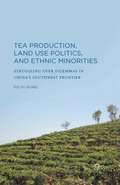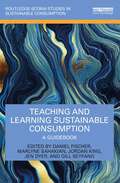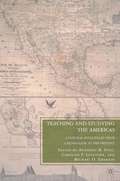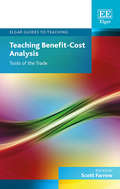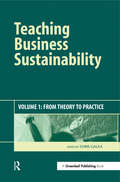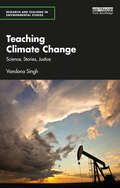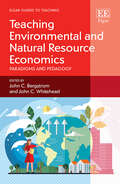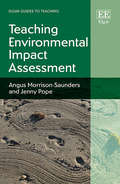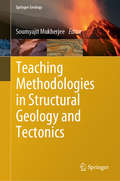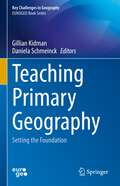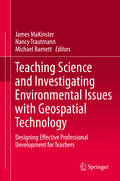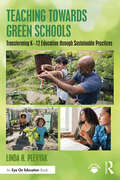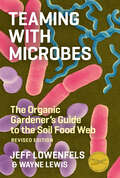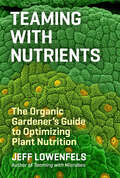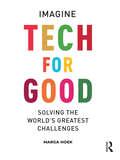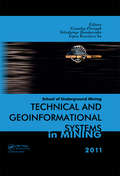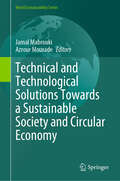- Table View
- List View
Tea Pickers (UEB contracted)
by RnibThis image shows two women picking tea. There is a locator dot shown, which will be at the top left of the page when the image is the correct way up. An image border surrounds the image. There is a woman facing forward on the left of the page. In the top of the image she has a pad on the top of her head. A blue nylon rope goes across it and down to the left and right. The rope disappears down her back where it will be attached to a collecting basket which is not shown. She is leaning forward and facing down so her face is shown at an angle and her mouth cannot be found. She wears a pale blue cotton top with sleeves to her elbows. The top half of her pink sari goes from her waist, up and right and over the shoulder to the right. She has two bands around her waist which hold up a grey apron. The apron protects and hides the lower half of her body and sari. Her arm on the left goes down and the hand cannot be found as the tea bush hides it. She wears a pink bracelet around the wrist. Her arm on the right is bent slightly at the elbow and her hand is clenched into a fist as she holds a small bunch of tea bush leaves. She has two pink bracelets around the wrist. Her lower body is hidden by the tea bushes which are shown filling the bottom third of the page. The woman on the right of the page is facing to the left so only one eye and ear is shown. In the top centre of the page is her head. She is leaning forward and facing down. To the top and left of her head is pad. A blue nylon rope goes across it and down to the right. To the right of the pad is a pale orange headscarf which has been tucked back behind her head and clear of her face so she can work. Her long hair is also tied back out of the way. She wears a red cotton top with sleeves to her elbows. The top half of her blue sari goes from her waist, up and left and over the shoulder to the left. She has a band around her waist which holds up a grey apron. Her arm on the left goes left and down, and the hand cannot be found as the tea bush hides it. She wears two red bracelets around the wrist. Her arm on the right is bent at the elbow and her hand is clenched into a fist as she holds a small bunch of tea bush leaves. She has two red bracelets around the wrist. Her lower body is hidden by the tea bushes. The rope goes from the pad on her head down and right. It is hidden by her shoulder briefly and then attaches to her collecting basket. It is inserted through the woven side, comes up from the inside and is knotted to itself shown as a small circle. The basket is full of tea bush leaves.
Tea Pickers (UEB uncontracted)
by RnibThis image shows two women picking tea. There is a locator dot shown, which will be at the top left of the page when the image is the correct way up. An image border surrounds the image. There is a woman facing forward on the left of the page. In the top of the image she has a pad on the top of her head. A blue nylon rope goes across it and down to the left and right. The rope disappears down her back where it will be attached to a collecting basket which is not shown. She is leaning forward and facing down so her face is shown at an angle and her mouth cannot be found. She wears a pale blue cotton top with sleeves to her elbows. The top half of her pink sari goes from her waist, up and right and over the shoulder to the right. She has two bands around her waist which hold up a grey apron. The apron protects and hides the lower half of her body and sari. Her arm on the left goes down and the hand cannot be found as the tea bush hides it. She wears a pink bracelet around the wrist. Her arm on the right is bent slightly at the elbow and her hand is clenched into a fist as she holds a small bunch of tea bush leaves. She has two pink bracelets around the wrist. Her lower body is hidden by the tea bushes which are shown filling the bottom third of the page. The woman on the right of the page is facing to the left so only one eye and ear is shown. In the top centre of the page is her head. She is leaning forward and facing down. To the top and left of her head is pad. A blue nylon rope goes across it and down to the right. To the right of the pad is a pale orange headscarf which has been tucked back behind her head and clear of her face so she can work. Her long hair is also tied back out of the way. She wears a red cotton top with sleeves to her elbows. The top half of her blue sari goes from her waist, up and left and over the shoulder to the left. She has a band around her waist which holds up a grey apron. Her arm on the left goes left and down, and the hand cannot be found as the tea bush hides it. She wears two red bracelets around the wrist. Her arm on the right is bent at the elbow and her hand is clenched into a fist as she holds a small bunch of tea bush leaves. She has two red bracelets around the wrist. Her lower body is hidden by the tea bushes. The rope goes from the pad on her head down and right. It is hidden by her shoulder briefly and then attaches to her collecting basket. It is inserted through the woven side, comes up from the inside and is knotted to itself shown as a small circle. The basket is full of tea bush leaves.
Tea Production, Land Use Politics, and Ethnic Minorities: Struggling over Dilemmas in China's Southwest Frontier
by Po-Yi HungIn this book, Po-Yi Hung uses tea production as a lens to investigate the tension between nature and society under the market economy in frontier China. By focusing on the landscape of the 'ancient tea forest' (guchalin), this book aims to understand the interactions among tea trees, entrepreneurs, the state, and the Bulang, an ethnic minority population. Intensive ethnographic research conducted by the author examines local Bulang villagers' everyday lives as entrepreneurs in the market economy at a time of changing moralities and cultural renovations. The author explores the dilemmas that arise in this unique region between tradition and modernity, territorial margin and connected space, and nature and development.
Teaching and Learning Sustainable Consumption: A Guidebook (Routledge-SCORAI Studies in Sustainable Consumption)
by Daniel Fischer Marlyne Sahakian Jordan King Jen Dyer Gill SeyfangThis book is a comprehensive guide on how to teach sustainable consumption in higher education. Teaching and Learning Sustainable Consumption: A Guidebook systematizes the themes, objectives, and theories that characterize sustainable consumption as an educational field. The first part of the book discusses approaches to teaching and learning sustainable consumption in higher education, including reflections on how learning occurs, to more practical considerations like how to set objectives or assess learning outcomes. The second part of the book is a dive into inspiring examples of what this looks like in a range of contexts and towards different aims – involving 57 diverse contributions by teachers and practitioners. Building on the momentum of a steady increase in courses addressing sustainable consumption over the past decade, this guidebook supports innovative approaches to teaching and learning, while also bringing to the fore conceptual debates around higher education and sustainability. Overall, this book will be a seminal resource for educators teaching about sustainability and consumption. It will help them to navigate the specifics of sustainable consumption as a field of scholarship, and design their teaching approaches in a more informed, competent, and creative way.
Teaching and Learning Sustainable Consumption: A Guidebook (Routledge-SCORAI Studies in Sustainable Consumption)
This book is a comprehensive guide on how to teach sustainable consumption in higher education. Teaching and Learning Sustainable Consumption: A Guidebook systematizes the themes, objectives, and theories that characterize sustainable consumption as an educational field. The first part of the book discusses approaches to teaching and learning sustainable consumption in higher education, including reflections on how learning occurs, to more practical considerations like how to set objectives or assess learning outcomes. The second part of the book is a dive into inspiring examples of what this looks like in a range of contexts and towards different aims – involving 57 diverse contributions by teachers and practitioners. Building on the momentum of a steady increase in courses addressing sustainable consumption over the past decade, this guidebook supports innovative approaches to teaching and learning, while also bringing to the fore conceptual debates around higher education and sustainability. Overall, this book will be a seminal resource for educators teaching about sustainability and consumption. It will help them to navigate the specifics of sustainable consumption as a field of scholarship, and design their teaching approaches in a more informed, competent, and creative way.
Teaching and Studying the Americas: Cultural Influences from Colonialism to the Present
by Anthony B. Pinn, Caroline F. Levander & Michael O. EmersonThis book considers how interdisciplinary conversation, critique, and collaboration enrich and transform humanities and social science education for those teaching and studying traditional Americanist fields.
Teaching Benefit-Cost Analysis: Tools of the Trade (Elgar Guides to Teaching)
by Scott FarrowTeaching Benefit-Cost Analysis is a unique look at the insights of internationally recognized teachers, researchers and practitioners addressing a difficult and controversial subject. Each chapter presents a self-contained module that includes guidance to additional resources, and many contain class exercises to provide detail and inspiration that extends beyond the scope of standard textbooks. The social evaluation of public investments by governments, international organizations and non-profits is an expanding field that encompasses both new and established areas of social policy. This book expands on the methods and issues central to the study of benefit-cost analysis, with specific topics including risk, societal distribution of impacts, limited versus national effects, the statistical value of a life and more. This book’s focus on classroom engagement makes it a valuable resource for teachers of benefit-cost analysis. Its attention to foundational and advanced concepts will be of interest to undergraduate or Master’s-level students of public policy, economics and related areas, as well as professional economists who apply benefit-cost analysis in their work.
Teaching Business Sustainability: From Theory to Practice
by Chris GaleaThere are many challenges facing educators in the field of sustainability. This text aims to analyze the state of the art in teaching business sustainability worldwide, and what teaching practices and tools are achieving successful results.
Teaching Business Sustainability: From Theory to Practice
by Chris GaleaThere are many challenges facing educators in the field of sustainability. This text aims to analyze the state of the art in teaching business sustainability worldwide, and what teaching practices and tools are achieving successful results.
Teaching Climate Change: Science, Stories, Justice (Research and Teaching in Environmental Studies)
by Vandana SinghTeaching Climate Change: Science, Stories, Justice shows educators how climate change can be taught from any disciplinary perspective and in a transdisciplinary way, drawing on examples from the author's own classroom. The book sets out a radical vision for climate pedagogy, introducing an innovative framework in which the scientific essentials of climate change are scaffolded via three transdisciplinary meta-concepts: Balance/Imbalance, Critical Thresholds and Complex Interconnections. Author Vandana Singh grounds this theory in practice, drawing on examples from her own classroom to provide implementable ideas for educators, and to demonstrate how climate change can be taught from any disciplinary perspective in a transdisciplinary way. The book also explores the barriers to effective climate education at a macro level, focusing on issues such as climate misinformation/misconception, the exclusion of social and ethical concerns and a focus on technofixes. Singh uses this information to identify four key dimensions for an effective climate pedagogy, in which issues of justice are central: scientific-technological, the transdisciplinary, the epistemological and the psychosocial. This approach is broad and flexible enough to be adapted to different classrooms and contexts. Bridging the social and natural sciences, this book will be an essential resource for all climate change educators practicing in both formal and informal settings, as well as for community climate activists.
Teaching Climate Change: Science, Stories, Justice (Research and Teaching in Environmental Studies)
by Vandana SinghTeaching Climate Change: Science, Stories, Justice shows educators how climate change can be taught from any disciplinary perspective and in a transdisciplinary way, drawing on examples from the author's own classroom. The book sets out a radical vision for climate pedagogy, introducing an innovative framework in which the scientific essentials of climate change are scaffolded via three transdisciplinary meta-concepts: Balance/Imbalance, Critical Thresholds and Complex Interconnections. Author Vandana Singh grounds this theory in practice, drawing on examples from her own classroom to provide implementable ideas for educators, and to demonstrate how climate change can be taught from any disciplinary perspective in a transdisciplinary way. The book also explores the barriers to effective climate education at a macro level, focusing on issues such as climate misinformation/misconception, the exclusion of social and ethical concerns and a focus on technofixes. Singh uses this information to identify four key dimensions for an effective climate pedagogy, in which issues of justice are central: scientific-technological, the transdisciplinary, the epistemological and the psychosocial. This approach is broad and flexible enough to be adapted to different classrooms and contexts. Bridging the social and natural sciences, this book will be an essential resource for all climate change educators practicing in both formal and informal settings, as well as for community climate activists.
Teaching Environmental and Natural Resource Economics: Paradigms and Pedagogy (Elgar Guides to Teaching)
Teaching Environmental and Natural Resource Economics is a significant contribution to the literature of economics education. Theory and practice, teaching activities and exercises, and pro teaching tips are clearly and expertly presented.The editors begin by presenting a bit of the historical thought on the study of environmental and natural resource economics. Once the editors establish context, they provide a full exploration of both paradigms and pedagogy. The paradigm section provides models for teaching the variety of courses offered at the university level. The chapters bridge the gap between environmental and natural resource economics textbooks and the classroom, with guidance for how to approach course topics. The pedagogy section is an excellent contribution to the teaching of environmental and natural resource economics, covering both particular topics and teaching methods.University instructors will find this guide to teaching environmental and natural resource economics invaluable in helping students gain a better understanding of the theory and practice of environmental and natural resource economics.
Teaching Environmental Impact Assessment (Elgar Guides to Teaching)
by Angus Morrison-Saunders Jenny PopeThis comprehensive guide provides readers with strategies for teaching Environmental Impact Assessment (EIA) in all its forms, whether through formal university programmes or in the form of short courses offered to professionals and practitioners. Featuring contributions from 39 university teachers and short course trainers, the centerpiece of the book is the suite of 37 recipes for teaching different aspects of EIA. This internationally relevant resource collectively embodies and applies the best practice principles for teaching EIA, developed through a two-year research project with input from a diverse group of international experts. It provides practical and innovative learning activities with complete instructions for successful delivery, and thus represents a truly comprehensive and up-to-date contribution to the field. This latest contribution to our Elgar Guides to Teaching series serves as both a basis for reflection upon curricula and teaching practices, and as a source of inspiration for learning activities that can be adopted and adapted for different contexts by EIA teachers and trainers. It will be a valuable resource to help both new and seasoned EIA educators expand their toolbox in order to teach EIA more effectively.
Teaching Geography in Primary Schools: Learning to Live in the World (PDF)
by Fran MartinThis is a book for people who do not think they are geographers. It is for teachers who struggle to find relevance for geography in the curriculum, and for whom it is not clear how to transform geographical knowledge into activities that are meaningful to our children and will generate a real excitement for the subject. The over-riding purpose of this book is to identify the geographical dimensions of our everyday experiences, and to provide some frameworks for this knowledge that will help us as teachers of primary geography.
Teaching Methodologies in Structural Geology and Tectonics (Springer Geology)
by Soumyajit MukherjeeThis edited book discusses various challenges in teaching structural geology and tectonics and how they have been overcome by eminent instructors, who employed effective and innovative means to do so. All of the chapters were written by prominent and active academics and geoscientists fully engaged in teaching Structural Geology and Tectonics. New instructors will find this book indispensible in framing their teaching strategy. Effective teaching of Structural Geology and Tectonics constitutes the backbone of geoscience education. Teaching takes place not only in classrooms, but also in labs and in the field. The content and teaching methodologies for these two fields have changed over time, shaped by the responsibilities that present-day geoscientists are expected to fulfill.
Teaching Primary Geography: Setting the Foundation (Key Challenges in Geography)
by Gillian Kidman Daniela SchmeinckThis book provides an international perspective on teaching and learning geography in the primary classroom. It describes the essence of primary school geography and identifies the ‘big ideas’, thereby offering a synthesis of the international geography curricula and classroom profiles against these big ideas. Each chapter discusses current and new research on a set topic, yet a common thread running between chapters is the assessment relevant to that particular topic. By providing a portrait of the central concepts, the essential skills and necessary inquiry processes of a primary geography education, the book will be of interest to education researchers, classroom teachers and the pre-service teacher, curriculum writers and policy writers.
Teaching Science and Investigating Environmental Issues with Geospatial Technology: Designing Effective Professional Development for Teachers
by James MaKinster Nancy Trautmann Michael BarnettThe emerging field of using geospatial technology to teach science and environmental education presents an excellent opportunity to discover the ways in which educators use research-grounded pedagogical commitments in combination with their practical experiences to design and implement effective teacher professional development projects. Often missing from the literature are in-depth, explicit discussions of why and how educators choose to provide certain experiences and resources for the teachers with whom they work, and the resulting outcomes. The first half of this book will enable science and environmental educators to share the nature and structure of large scale professional development projects while discussing the theoretical commitments that undergird their work. Many chapters will include temporal aspects that present the ways in which projects change over time in response to evaluative research and practical experience. In the second half of the book, faculty and others whose focus is on national and international scales will share the ways in which they are working to meet the growing needs of teachers across the globe to incorporate geospatial technology into their science teaching. These efforts reflect the ongoing conversations in science education, geography, and the geospatial industry in ways that embody the opportunities and challenges inherent to this field. This edited book will serve to define the field of teacher professional development for teaching science using geospatial technology. As such, it will identify short term and long term objectives for science, environmental, and geography educators involved in these efforts. As a result, this book will provide a framework for future projects and research in this exciting and growing field.
Teaching Towards Green Schools: Transforming K–12 Education through Sustainable Practices
by Linda H. PlevyakThis engaging and timely book showcases practical ways that PreK–12 teachers and school leaders can create and implement sustainability-focused projects and practices in their classrooms and schools, helping promote a healthy, sustainable environment and curriculum for students and leading the way towards becoming a green school. Sharing real-world case studies and detailed walk-throughs of sustainable schools in action – from Madison, Alabama, to Bali, Indonesia – author Linda H. Plevyak lays out the benefits, principles and practices of creating a sustainable school from beginner classroom projects like creating a garden, recycling and composting to more complex and school-wide initiatives like energy audits, creating an environmental management system, engaging with policy and building and leveraging community partnerships. Plevyak highlights sustainable practices that can be developed with little to no budget and focuses on those that support the development of critical thinking skills, promote project-based learning and consider the environment as a learning tool, incorporating sustainability as a natural progression of the learning process. The book outlines extensive resources teachers and schools can use to embed sustainability in their programs and curriculum, offering teachers, school leaders and policy makers the tools they need to provide this generation of students with the knowledge and skills to create a more sustainable world.
Teaching Towards Green Schools: Transforming K–12 Education through Sustainable Practices
by Linda H. PlevyakThis engaging and timely book showcases practical ways that PreK–12 teachers and school leaders can create and implement sustainability-focused projects and practices in their classrooms and schools, helping promote a healthy, sustainable environment and curriculum for students and leading the way towards becoming a green school. Sharing real-world case studies and detailed walk-throughs of sustainable schools in action – from Madison, Alabama, to Bali, Indonesia – author Linda H. Plevyak lays out the benefits, principles and practices of creating a sustainable school from beginner classroom projects like creating a garden, recycling and composting to more complex and school-wide initiatives like energy audits, creating an environmental management system, engaging with policy and building and leveraging community partnerships. Plevyak highlights sustainable practices that can be developed with little to no budget and focuses on those that support the development of critical thinking skills, promote project-based learning and consider the environment as a learning tool, incorporating sustainability as a natural progression of the learning process. The book outlines extensive resources teachers and schools can use to embed sustainability in their programs and curriculum, offering teachers, school leaders and policy makers the tools they need to provide this generation of students with the knowledge and skills to create a more sustainable world.
Teaming with Microbes: The Organic Gardener's Guide to the Soil Food Web, Revised Edition
by Jeff Lowenfels Wayne LewisThere is an alternative to the vicious circle of chemical fertilizers: to garden in a way that strengthens, rather than destroys, the soil food web—the complex world of soil-dwelling organisms whose interactions create a nurturing environment for plants.
Teaming with Nutrients: The Organic Gardener's Guide to Optimizing Plant Nutrition
by Jeff LowenfelsTeaming with Nutrients will make you a better informed, more successful, more environmentally responsible gardener and will give you a new appreciation for the plants you grow.
Tech For Good: Imagine Solving the World’s Greatest Challenges
by Marga HoekTech For Good reveals how Fourth Industrial Revolution technologies will help solve the world’s greatest challenges like climate change, biodiversity loss, inequality, and poverty. Tech For Good presents a unique perspective on how business can successfully apply advanced technologies in a purpose-driven manner while unlocking new markets and seizing business opportunities. Packed with 75 real-life business cases of companies from all over the world, this inspiring book unfolds a compelling narrative about how businesses commercially synergize technology and sustainability. The purpose of this book is to imagine the unprecedented possibilities advanced technologies offer business to drive sustainable growth. Tech for Good will be vital for realizing our Global Goals.
Tech For Good: Imagine Solving the World’s Greatest Challenges
by Marga HoekTech For Good reveals how Fourth Industrial Revolution technologies will help solve the world’s greatest challenges like climate change, biodiversity loss, inequality, and poverty. Tech For Good presents a unique perspective on how business can successfully apply advanced technologies in a purpose-driven manner while unlocking new markets and seizing business opportunities. Packed with 75 real-life business cases of companies from all over the world, this inspiring book unfolds a compelling narrative about how businesses commercially synergize technology and sustainability. The purpose of this book is to imagine the unprecedented possibilities advanced technologies offer business to drive sustainable growth. Tech for Good will be vital for realizing our Global Goals.
Technical and Geoinformational Systems in Mining: School of Underground Mining 2011
by Genadiy Pivnyak Volodymyr Bondarenko Iryna Kovalevs'KaNew trends of mineral deposits mining in the world consist of intensifying and concentration of mining operations. This is achieved with the help of new technical equipment that is more reliable, having greater service life and more available power. Consideration is given to quantity reduction of stopes and development workings together with t
Technical and Technological Solutions Towards a Sustainable Society and Circular Economy (World Sustainability Series)
by Jamal Mabrouki Azrour MouradeResource depletion and ecological risks are more than ever at the heart of societal and economic debates. In the 1970s, the developed countries saw the Fordist growth regime crumble in parallel with the growing awareness of the ecological issue. Since the first industrial revolutions, technological dynamics have been the cause of many environmental problems, and there is a consensus on the diagnosis. Integrated technologies reduce resource use and/or pollution at source by using cleaner production methods. This generally leads to a reduction in the by-products, energy inputs and resources used by companies to produce goods.Integrated production technologies reduce negative environmental impacts at source by substituting or modifying cleaner technologies. Examples of integrated, or cleaner, production technologies are the recirculation of materials, the use of environmentally friendly materials (such as the substitution of water for organic solvents), etc. However, the implementation of integrated production technologies is often hampered by obstacles related to cost, coordination and skill inertia problems and to the productive organisation of companies. In addition to the high investment costs of new integrated technologies, additional barriers may emerge depending on the nature of the environmental problem and the type of environmental regulation in question.

